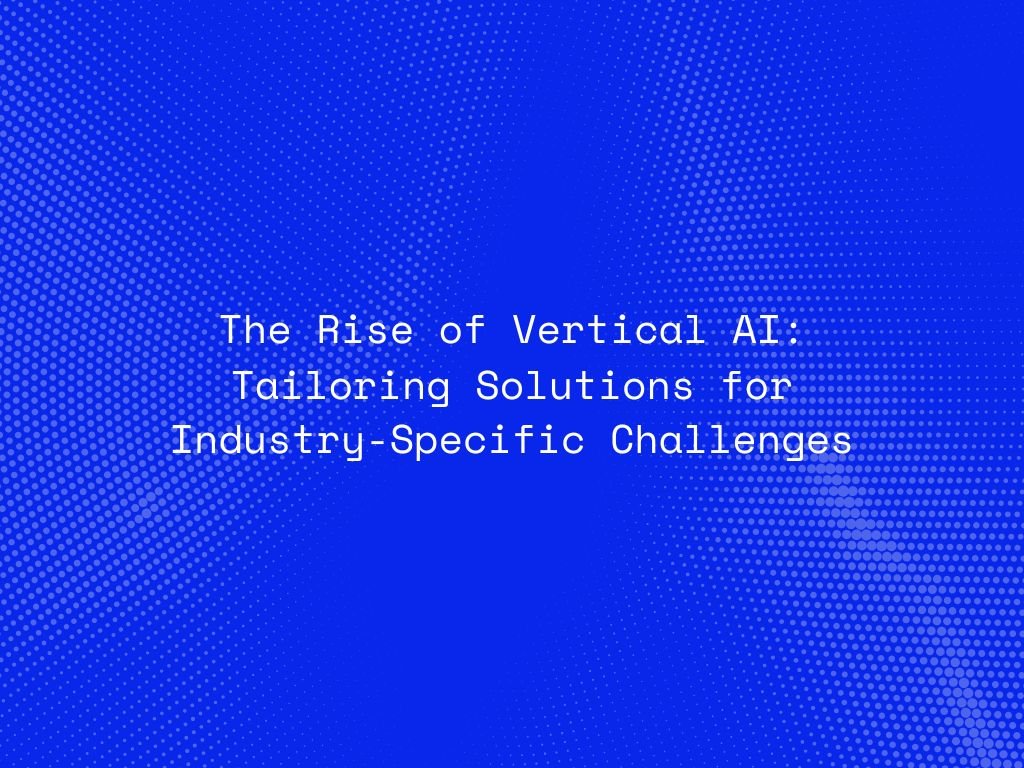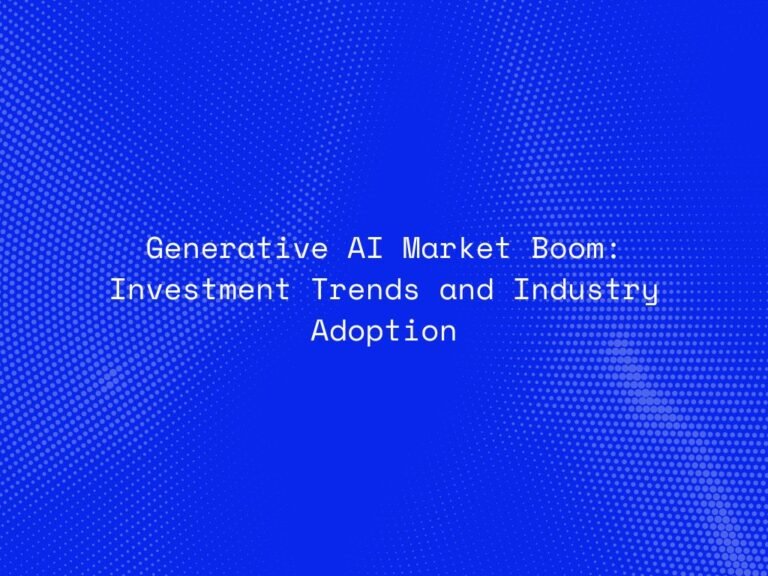Artificial intelligence is no longer a one-size-fits-all technology. While general-purpose AI models have shown remarkable capabilities in language, vision, and decision-making, industries are now looking for something more precise, more relevant, and more context-aware. Enter Vertical AI—the new wave of artificial intelligence solutions that are deeply specialized, purpose-built, and fine-tuned to the unique challenges of specific industries.
As we transition from broad, horizontal AI tools to industry-specific (vertical) applications, businesses are beginning to see more tangible, operational, and measurable value. From financial fraud detection to predictive diagnostics in healthcare, Vertical AI is unlocking possibilities that generic models simply can’t reach.
What Is Vertical AI?
Vertical AI refers to artificial intelligence solutions that are designed with a narrow, domain-specific focus. Unlike general AI systems, which are built to handle a wide range of tasks across multiple industries, Vertical AI is trained on specialized data and workflows that reflect the nuances, compliance needs, and user behavior patterns of a particular sector.
This targeted approach allows for:
-
Higher accuracy
-
Faster deployment
-
Better user experience
-
Lower risk of failure
-
Easier compliance with industry regulations
Vertical AI systems are more than just smart—they’re strategically aligned with industry operations, regulations, and vocabulary.
Why Vertical AI Is Gaining Momentum
Several forces are driving the rise of Vertical AI:
-
Data Maturity Within Industries: Sectors like finance, healthcare, and retail now have massive domain-specific datasets that enable training of specialized models.
-
Demand for Precision and Compliance: In industries with high regulatory standards, general AI lacks the fine-tuned accuracy and explainability needed for compliance.
-
Cost Efficiency and ROI: Tailored AI systems reduce unnecessary complexity and deliver faster returns on investment by focusing on high-impact use cases.
-
Shorter Learning Curves: Since models are trained on industry-specific jargon, processes, and formats, adoption is smoother and more intuitive.
Key Use Cases of Vertical AI by Industry
Let’s explore how Vertical AI is being implemented across sectors:
1. Healthcare
-
AI-assisted diagnostics using radiology and pathology imaging.
-
Clinical decision support systems tailored to specific specialties.
-
Predictive models for hospital readmissions, treatment adherence, and resource optimization.
2. Finance
-
Fraud detection systems trained on historical transaction anomalies.
-
AI-driven credit scoring based on alternative, industry-specific data.
-
RegTech tools for real-time monitoring and compliance with financial regulations.
3. Retail and E-commerce
-
Personalized recommendations that reflect seasonal trends, regional demand, and inventory levels.
-
AI-powered demand forecasting for localized product stocking.
-
Customer sentiment analysis tailored to brand-specific interactions.
4. Manufacturing
-
Predictive maintenance models for specific equipment and operational environments.
-
AI-driven quality control systems trained on product-specific data.
-
Supply chain optimization using industry-calibrated logistics models.
5. Legal and Compliance
-
Contract analysis tools trained on legal language and case law.
-
eDiscovery platforms tailored to specific regulations and jurisdictions.
-
Compliance monitoring systems for industry-specific legal obligations.

Benefits of Vertical AI Over Horizontal AI
While horizontal AI models like GPT or DALL·E offer broad utility, they often fall short when deep domain knowledge or compliance is critical. Vertical AI offers:
-
Domain expertise baked in: Fewer hallucinations or irrelevant outputs.
-
Higher trust and adoption: Better acceptance from professionals who expect context-sensitive systems.
-
Improved ROI: Less training required and faster time-to-value.
-
Built-in regulatory awareness: Especially valuable in finance, healthcare, and legal sectors.
Challenges in Implementing Vertical AI
Despite its promise, Vertical AI adoption comes with its own challenges:
-
Access to high-quality, labeled industry data can be difficult.
-
Integration with legacy systems may require customization.
-
Talent scarcity in both AI development and domain knowledge.
-
Maintaining model updates as regulations and industry dynamics change.
To overcome these challenges, many organizations partner with specialized vendors or build cross-functional AI teams with domain experts.
The Future of Vertical AI
Looking ahead, we’ll likely see:
-
Proliferation of industry-specific AI-as-a-Service (AIaaS) platforms.
-
More LLMs fine-tuned for sector-specific applications.
-
Open-source initiatives targeting vertical domains (e.g., Med-PaLM for healthcare, FinBERT for finance).
-
Greater explainability and trustworthiness baked into vertical AI models.
As the market matures, success will depend on contextual intelligence—AI that understands not just language or images, but workflow, regulation, intent, and nuance.
Conclusion
Vertical AI marks a pivotal evolution in artificial intelligence—from universal tools to bespoke intelligence designed for real-world, high-stakes environments. By focusing on specific sectors and leveraging industry data, these systems deliver higher accuracy, compliance, and impact.
For enterprises navigating the digital age, adopting Vertical AI isn’t just an upgrade—it’s a strategic necessity to remain competitive, efficient, and future-ready.




